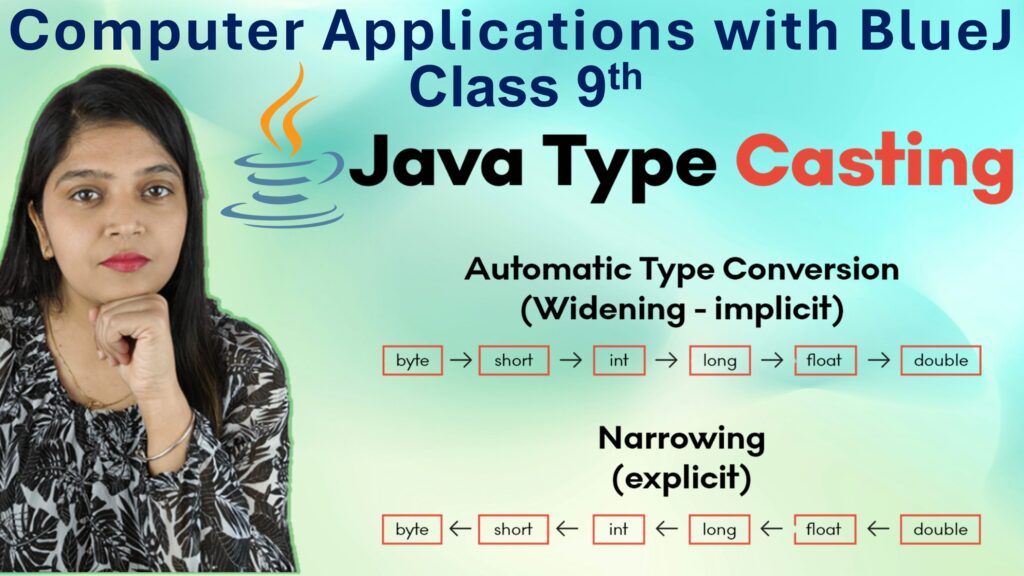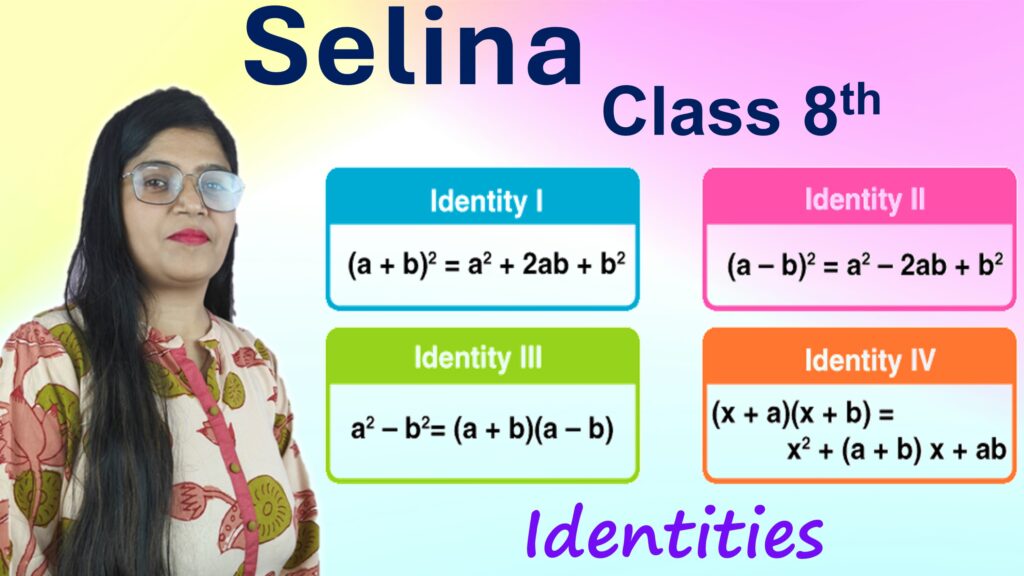Exercise: 1-E
Multiple Choice Type
Q1: A number of the form \(\frac{p}{q}\) is said to be a rational number if
Explanation:
Rational numbers are numbers that can be expressed in the form:
\[
\frac{p}{q}, \text{ where } p \in \mathbb{Z},\ q \in \mathbb{Z},\ q \ne 0
\]
So both p and q must be integers (not just whole or natural numbers), and q ≠ 0.
Answer: c. p and q are integers and q ≠ 0
Q2: The additive inverse of \(\frac{-5}{12}\) is
Concept: Additive inverse of a number is what we add to it to get 0.
Let’s say:
\[
\text{Additive Inverse of } \frac{-5}{12} = x
\]
Then,
\[
\frac{-5}{12} + x = 0 \Rightarrow x = \frac{5}{12}
\]Answer: a. \(\frac{5}{12}\)
Q3: The multiplicative inverse of \(\frac{-5}{12}\) is
Concept: Multiplicative inverse of a number is what we multiply it with to get 1.
Let’s say:
\[
x = \text{Multiplicative Inverse of } \frac{-5}{12}
\]
Then,
\[
\frac{-5}{12} \times x = 1 \Rightarrow x = \frac{-12}{5}
\]Answer: c. \(\frac{-12}{5}\)
Q4: The product of additive inverse and multiplicative inverse of \(\frac{-1}{4}\) is
Step 1: Find additive inverse:
\[
\text{Additive inverse of } \frac{-1}{4} = \frac{1}{4}
\]Step 2: Find multiplicative inverse:
\[
\text{Multiplicative inverse of } \frac{-1}{4} = \frac{-4}{1} = -4
\]Step 3: Multiply them:
\[
\frac{1}{4} \times (-4) = -1
\]Answer: b. -1
Q5: The reciprocal of a negative rational number
Let’s assume a negative rational number:
\[
\text{Say } r = \frac{-a}{b},\ \text{where } a,b > 0
\]
Then the reciprocal is:
\[
\frac{b}{-a} = -\frac{b}{a}
\]
So it remains negative.
Answer: b. is a negative rational number
Q6: Which rational numbers are equal to their reciprocals?
Let the number be x. Then,
\[
x = \frac{1}{x} \Rightarrow x^2 = 1 \Rightarrow x = \pm1
\]
So, only -1 and 1 satisfy this condition.
Answer: c. -1, 1
Q7: Which of the following expressions shows that rational numbers are associative under multiplication?
Associative Property of Multiplication:
\[
a \times (b \times c) = (a \times b) \times c
\]
Let’s check option (i):
\[
\frac{4}{5} \times \left(\frac{-6}{7} \times \frac{8}{9}\right) = \left(\frac{4}{5} \times \frac{-6}{7}\right) \times \frac{8}{9}
\]
This matches associative property.
Answer: a. \(\frac{4}{5} \times \left(\frac{-6}{7} \times \frac{8}{9}\right) = \left(\frac{4}{5} \times \frac{-6}{7}\right) \times \frac{8}{9}\)
Q8: \(\frac{-1}{4}\times\left[\frac{2}{5}+\left(\frac{-5}{6}\right)\right]=\ ? \)
Let’s simplify inside the bracket first:
\[
\frac{2}{5} + \left(\frac{-5}{6}\right) = \frac{2}{5} – \frac{5}{6}
\]
LCM of 5 and 6 = 30
\[
= \frac{12}{30} – \frac{25}{30} = \frac{-13}{30}
\]
Now multiply:
\[
\frac{-1}{4} \times \frac{-13}{30} = \frac{13}{120}
\]
Now check LHS matches with option (i):
Option (i):
\[
\left[\frac{-1}{4} \times \frac{2}{5}\right] + \left[\frac{-1}{4} \times \left(\frac{-5}{6}\right)\right]
\]
Simplify both terms:
\[
= \frac{-2}{20} + \frac{5}{24} = \frac{-1}{10} + \frac{5}{24}
\]
LCM = 120 → \( \frac{-12}{120} + \frac{25}{120} = \frac{13}{120} \)
Answer: a. \(\left[\frac{-1}{4} \times \frac{2}{5}\right] + \left[\frac{-1}{4} \times \left(\frac{-5}{6}\right)\right]\)
Q9: By what rational number should \(\frac{-5}{24}\) be multiplied to get 10?
Let x be the required number:
\[
\frac{-5}{24} \times x = 10 \Rightarrow x = \frac{10 \times 24}{-5} = \frac{240}{-5} = -48
\]Answer: d. -48
Q10: What should be added to \(\frac{-3}{4}\) to get \(\frac{7}{6}\)?
Let the number to be added be x:
\[
\frac{-3}{4} + x = \frac{7}{6} \Rightarrow x = \frac{7}{6} – \left(\frac{-3}{4}\right) = \frac{7}{6} + \frac{3}{4}
\]
LCM of 6 and 4 = 12
\[
= \frac{14}{12} + \frac{9}{12} = \frac{23}{12}
\]Answer: d. \(\frac{23}{12}\)
Q11: What should be subtracted from \(-\frac{7}{8}\) so as to get \(\frac{5}{12}\)?
Let the number to be subtracted be x:
\[
-\frac{7}{8} – x = \frac{5}{12} \Rightarrow -x = \frac{5}{12} + \frac{7}{8}
\]
LCM of 12 and 8 = 24
\[
= \frac{10}{24} + \frac{21}{24} = \frac{31}{24} \Rightarrow x = -\frac{31}{24}
\]Answer: c. \(-\frac{31}{24}\)
Q12: The sum of two rational numbers is \(-3\).If one of the numbers is \(\frac{-7}{5}\),then the other number is
Let the other number be x:
\[
\frac{-7}{5} + x = -3 \Rightarrow x = -3 – \left(\frac{-7}{5}\right) = -3 + \frac{7}{5} \\
= \frac{-15 + 7}{5} = \frac{-8}{5}
\]Answer: a. \(\frac{-8}{5}\)
Q13: The product of two numbers is \(\frac{-16}{35}\). If one of the numbers is \(\frac{-15}{14}\), then the other is
Let the other number be x:
\[
\frac{-15}{14} \times x = \frac{-16}{35} \Rightarrow x = \frac{-16}{35} \div \frac{-15}{14} \\
= \frac{-16}{35} \times \frac{14}{-15} = \frac{224}{525} = \frac{32}{75}
\]Answer: d. \(\frac{32}{75}\)
Q14: Which of the following numbers is in standard form?
Standard form: Numerator and denominator have no common factor (except 1), and denominator is positive.
Check options:
– i. \(\frac{-12}{26}\) → Common factor = 2 → Not standard
– ii. \(\frac{-49}{70}\) → GCD = 7 → Not standard
– iii. \(\frac{-9}{16}\) →No common factors
– iv. \(\frac{28}{-105}\) → Denominator negative → Not standard
Answer: c. \(\frac{-9}{16}\)
Q15: \(\left(\frac{-9}{16}\times\frac{8}{15}\right)=\ ? \)
Multiply the numerators and denominators:
\[
= \frac{-9 \times 8}{16 \times 15} = \frac{-72}{240}
\]
Simplify by dividing numerator and denominator by 24:
\[
= \frac{-3}{10}
\]Answer: a. \(\frac{-3}{10}\)
Q16: \(\left(\frac{-5}{9}\div\frac{2}{3}\right)=\ ?\)
Dividing two rational numbers means multiplying the first by the reciprocal of the second:
\[
= \frac{-5}{9} \times \frac{3}{2} = \frac{-15}{18} = \frac{-5}{6}
\]Answer: b. \(\frac{-5}{6}\)
Q17: \(\frac{4}{9}\div?=\frac{-8}{15}\)
Let the unknown number be x:
\[
\frac{4}{9} \div x = \frac{-8}{15} \\
\Rightarrow x = \frac{4}{9} \div \frac{-8}{15} = \frac{4}{9} \times \frac{15}{-8} = \frac{60}{-72} = \frac{-5}{6}
\]Answer: d. \(\frac{-5}{6}\)
Q18: Between any two given rational numbers we can find
Explanation: Between any two rational numbers, we can always find another rational number by averaging them:
\[
\text{If } a < b,\ \text{then }\frac{a+b}{2} \text{ lies between } a \text{ and } b
\]
This can be done infinitely many times.
Answer: d. Infinitely many rational numbers
Q19: A rational number between \(\frac{1}{5}\) and \(\frac{1}{2}\) is
Convert to like denominators:
\[
\frac{1}{5} = \frac{4}{20},\ \frac{1}{2} = \frac{10}{20} \\
\Rightarrow \text{Any number between 4 and 10 in 20ths will work} \\
\frac{7}{20} \text{ lies between } \frac{4}{20} \text{ and } \frac{10}{20}
\]Answer: d. \(\frac{7}{20}\)
Q20: Identify a rational number between \(\frac{1}{3}\) and \(\frac{4}{5}\).
Convert to like denominators:
\[
\frac{1}{3} = \frac{10}{30},\ \frac{4}{5} = \frac{24}{30}
\Rightarrow \frac{17}{30} \text{ lies between them}
\]Answer: c. \(\frac{17}{30}\)
Q21: The arrangement of rational numbers \(\frac{-7}{10},\ \frac{5}{-8},\ \frac{2}{-3}\), in ascending order is
Step 1: Convert all to standard form (denominator positive)
\[
\frac{-7}{10},\ \frac{5}{-8} = \frac{-5}{8},\ \frac{2}{-3} = \frac{-2}{3}
\]Step 2: Convert to decimal equivalents (for easy comparison):
\[
\frac{-7}{10} = -0.7,\quad \frac{-5}{8} = -0.625,\quad \frac{-2}{3} \approx -0.666
\]Step 3: Arrange from smallest to largest:
\[
-0.7 < -0.666 < -0.625 \Rightarrow \frac{-7}{10},\ \frac{-2}{3},\ \frac{-5}{8}
\]Answer: b. \(\frac{-7}{10},\ \frac{2}{-3},\ \frac{5}{-8}\)







Leave a Comment